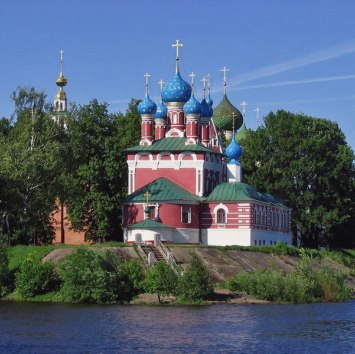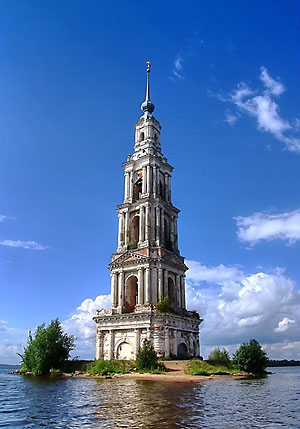
General Information
· Lectures, Questions & Answers
· Topics
Scientific Programme
Registration
Host City
· Contacts
Excursion to Uglich and Kallyasin
August, 29
|
The Church of Dimitri On Blood on the bank of the Volga river. Uglich is a fascinating old town situated on the right bank of the Volga river in the Yaroslavl Region. Built as a border fortress of Moscovy. Principality it was founded in 937. At the end of the XVI century Uglich became the stage for major events in Russian history. With the death of Prince Dimitry the dynasty of Ryurik ceased existing, and the dynasty of the Romanovs originated from here (boyarynia Ksenia Shestova, the mother of the first tsar of the Romanov dynasty, was the born in Uglich). Uglich is a gemstone in the crown of the Golden Ring. It is rich in ancient cathedral architecture. The Kremlin with the Duke's chamber, Dmitry on Blood church and the Transfiguration of the Savior cathedral, the ensembles of Alexeevsky, Voskresensky (the Resurrection) and Theophany monasteries stand out among town's attractions.
Kallyasin Kallyasin is one of the oldest cities of the Tverskaya region, and is situated on the bank of river Volga. It was first mentioned in the XII century. In 1134 Yury Dolgoruky founded a city-fortress Knyazin in the river Nert. Later, on the other side of the River Troitsky, the Kalyazinsky Men's Monastery was founded and soon became the main feature, and cultural and economic center of the new city. In 1936-1940 the territory of the monastery was flooded and the main monument of the city were inundated. In its place a hydroelectric power station and a reservoir were built. Today Kalyazin is merely a large city with 26 000 citizens; its main sight is a Bell Tower - the only part left from the monastery - that now stands, lonely, in deep waters. |
 |  |  |  |  |
 Uglich
Uglich
 Uglich is a historical and cultural memorial of Russia. Each age has added up names of people whose fates were tied together with the fate of the city and Russian history. Thematically diverse Uglich museums reveal the richness of the cultural heritage and the traditions of the ancient Russian land to the visitors.
Uglich is a historical and cultural memorial of Russia. Each age has added up names of people whose fates were tied together with the fate of the city and Russian history. Thematically diverse Uglich museums reveal the richness of the cultural heritage and the traditions of the ancient Russian land to the visitors.